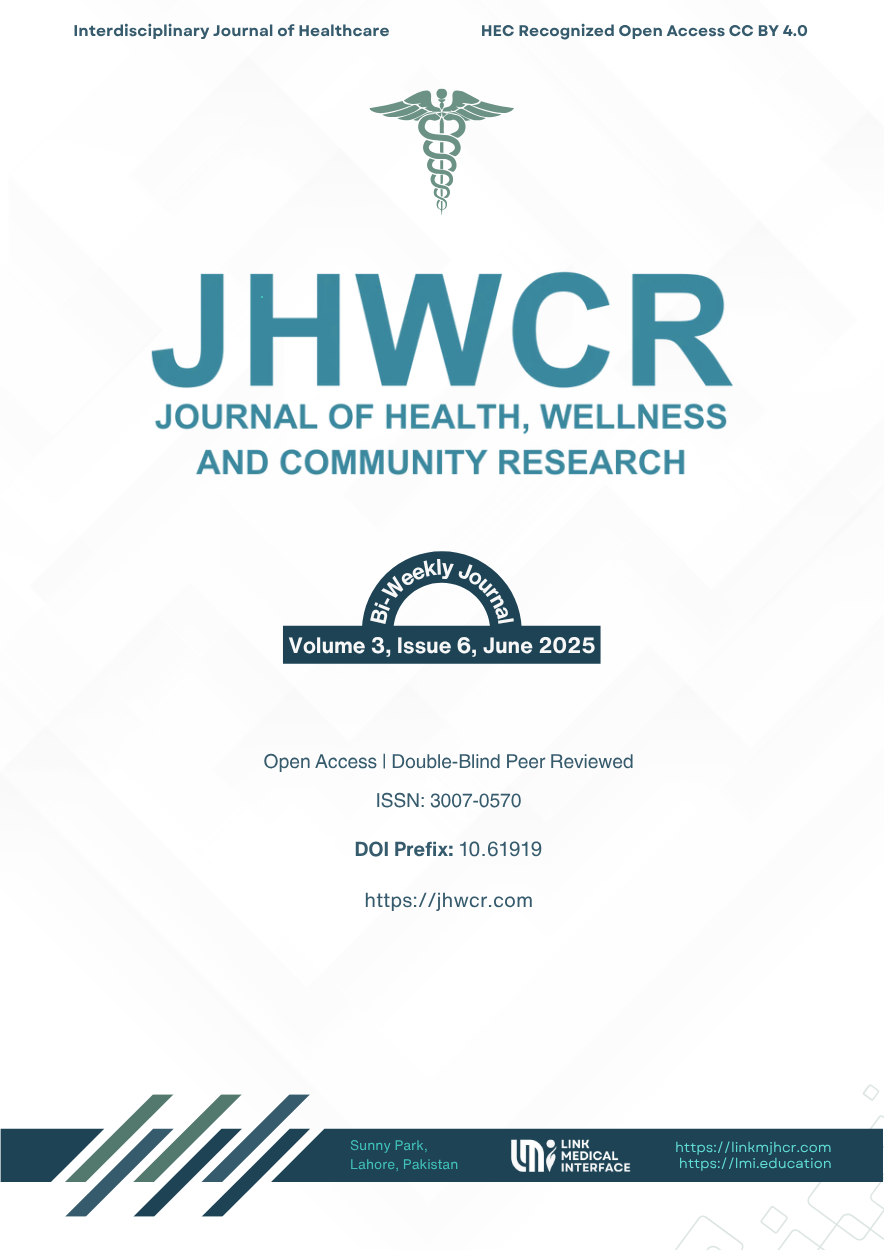Magnetic Resonance Imaging Assessment of Cervical Nerve Root Compression in Symptomatic Patients
DOI:
https://doi.org/10.61919/b6k4s944Keywords:
Cervical vertebrae, nerve compression syndromes, magnetic resonance imaging, spondylolisthesis, disc degenerationAbstract
Background: Cervical nerve root compression is a common cause of neck pain and neurological symptoms, yet the prevalence and clinical relevance of specific degenerative changes on MRI in symptomatic adults remain incompletely characterized, particularly in South Asian populations. Objective: This study aimed to assess the frequency and demographic distribution of MRI-detected cervical degenerative abnormalities—specifically disc bulge, spondylolisthesis, and nerve root compression—in adults presenting with symptoms suggestive of cervical nerve compression, and to evaluate their association with age and gender. Methods: A descriptive cross-sectional study was conducted at the Radiology Department of Farooq Hospital, Lahore, from January to March 2025. A total of 102 adults aged 16 years and older with clinical signs of cervical radiculopathy were enrolled using convenience sampling. Patients with prior cervical surgery, trauma, infection, tumor, or congenital anomalies were excluded. Standardized MRI protocols were applied, and findings were independently reviewed by blinded radiologists. Data were analyzed using SPSS v25 with chi-square and correlation tests for group comparisons; statistical significance was set at p<0.05. Ethical approval was obtained, and all procedures followed the Helsinki Declaration. Results: Disc bulge was the most frequent abnormality (55.9%), followed by spondylolisthesis (43.1%) and nerve root compression (42.2%). Disc bulge was significantly more common in males (66.1% vs. 43.5%, p=0.022), while other degenerative features showed no significant age or gender associations. Conclusion: MRI reveals a high prevalence of degenerative changes, especially disc bulge and spondylolisthesis, among symptomatic adults. These findings support the clinical value of MRI in diagnostic decision-making and highlight the influence of gender on disc pathology, emphasizing early and comprehensive imaging for effective management.
Downloads
Published
Issue
Section
License
Copyright (c) 2025 Laiba Ismail, Maydah Rafique, Amina Rehman, Aneesa Sardar, Ali Raza, Fatima Hussain, Ali Noman (Author)

This work is licensed under a Creative Commons Attribution 4.0 International License.


